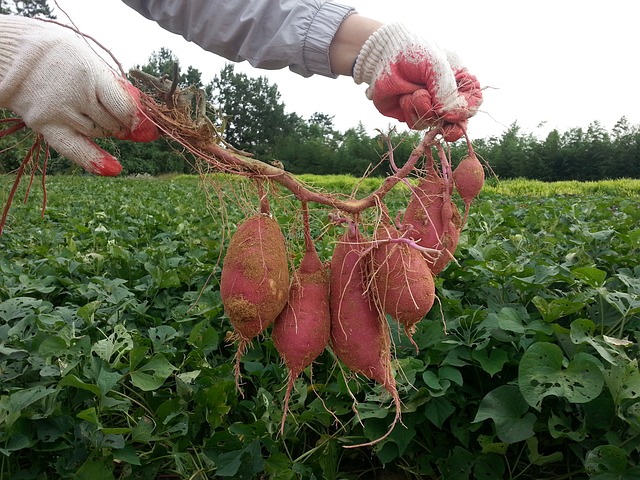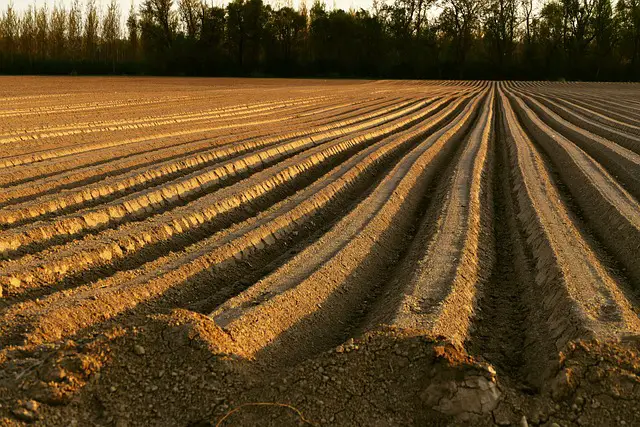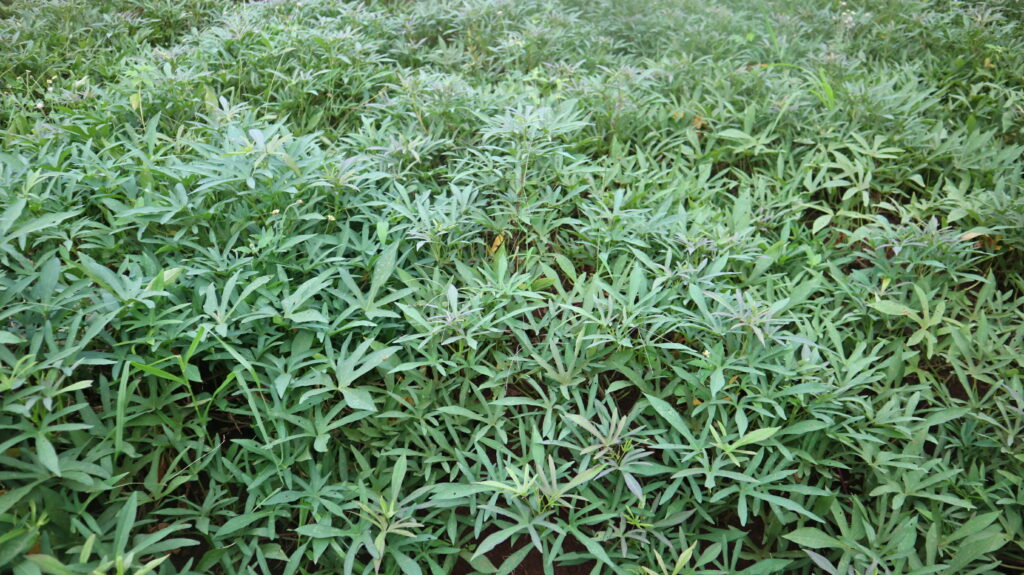Sweet potatoes are a warm-season crop that requires a long growing season of around 90 to 120 days. For gardeners in USDA Zone 8a, it is essential to know when to plant sweet potatoes to ensure a good harvest. Planting sweet potatoes at the right time will help gardeners to get the most out of their crop.
The best time to plant sweet potatoes in Zone 8a is typically in late spring or early summer when the soil temperature has warmed up to at least 60°F (15°C). This usually occurs around late May or early June.
However, the earliest that gardeners can plant sweet potatoes in Zone 8a is April, but they should wait until May if they don’t want to take any chances. The last month to plant sweet potatoes and expect a good harvest is probably August. If gardeners wait any later than that, their sweet potatoes may not have a chance to fully mature.
Key Takeaways
- Sweet potatoes are a warm-season crop that requires a long growing season of around 90 to 120 days.
- The best time to plant sweet potatoes in Zone 8a is typically in late spring or early summer when the soil temperature has warmed up to at least 60°F (15°C).
- Gardeners can plant sweet potatoes as early as April in Zone 8a, but they should wait until May to avoid any risks.
Check out these other posts:
- When to Plant Strawberries in Zone 8a?
- When to Plant Shrubs in Zone 7?
- When to Plant Seminole Pumpkins in Florida?
Understanding USDA Zone 8a

USDA Zone 8a is a plant hardiness zone that is characterized by an average minimum temperature range of 10 to 15 degrees Fahrenheit (-9.5 to -12.2 degrees Celsius).
This zone covers a large portion of the southern United States, including parts of Texas, Oklahoma, Arkansas, Louisiana, Mississippi, Alabama, Georgia, South Carolina, and North Carolina.
The USDA zone information is essential for gardeners to determine the most suitable plants to grow in their area. It provides valuable data about the average last frost date and the lowest expected temperature for a particular region. This information is crucial in determining the right time to plant and the best plants to grow in a specific zone.
In Zone 8a, the average last frost date typically falls between March 1st and March 31st. The lowest expected temperature in this zone is around 10 to 15 degrees Fahrenheit (-9.5 to -12.2 degrees Celsius). Gardeners should take these factors into account when planning their planting schedule.
When it comes to sweet potatoes, gardeners in Zone 8a should plant them when the soil temperature has warmed up to at least 60°F (15°C). This usually occurs around late May or early June.
Sweet potatoes are warm-season crops and require a long growing season of around 90 to 120 days, so it’s important to plant them when the soil is warm enough for them to thrive.
When to Plant Sweet Potatoes in Zone 8a
Sweet potatoes are a warm-season crop that requires a long growing season of around 90 to 120 days. In Zone 8a, the best time to plant sweet potatoes is typically in late spring or early summer when the soil temperature has warmed up to at least 60°F (15°C). This usually occurs around late May or early June.
It’s important to note that sweet potatoes are sensitive to frost and cold temperatures. Therefore, it’s best to wait until after the last frost date to plant them. In Zone 8a, the last frost date is usually around April 1st, but it can vary depending on the specific location.
Planting sweet potatoes too early can result in stunted growth and poor yields.
The earliest that you can plant sweet potatoes in Zone 8a is April. However, it’s recommended to wait until May if you don’t want to take any chances. The last month that you can plant sweet potatoes and expect a good harvest is probably August. If you wait any later than that, your sweet potatoes may not have a chance to fully mature.
When planting sweet potatoes, it’s important to choose a planting time that will allow them to mature before the first frost in the fall. In Zone 8a, the first frost date is usually around November 15th. Therefore, it’s best to plant sweet potatoes by early August to ensure they have enough time to mature before the first frost.
Preparing for Planting

Before planting sweet potatoes in Zone 8a, it is important to prepare the soil properly. Sweet potatoes require well-drained soil with a pH between 5.0 and 6.5. Test the soil pH with a kit available at your local garden center or through a soil testing laboratory. If the pH is too high, add sulfur to lower it, or if it is too low, add lime to raise it.
Sweet potatoes grow best in loose, well-draining soil. Amend the soil with compost to improve its texture and fertility. Spread a 2- to 3-inch layer of compost over the planting area and mix it into the top 6 inches of soil. This will help retain moisture and provide nutrients to the growing sweet potatoes.
After preparing the soil, consider using mulch to help control weeds and conserve moisture. Black plastic mulch is an effective option for sweet potatoes. It warms the soil, retains moisture, and suppresses weeds. Lay the plastic mulch over the planting area and secure it with soil or rocks.
Once the sweet potatoes are planted, continue to mulch around the plants to maintain moisture and suppress weeds. A 2- to 3-inch layer of mulch is recommended. Organic mulches such as straw, leaves, or grass clippings can also be used.
Choosing the Right Sweet Potato Varieties
When it comes to growing sweet potatoes in zone 8a, choosing the right variety is crucial. Different varieties have different characteristics that make them better suited for certain growing conditions. Here are some popular sweet potato varieties that thrive in zone 8a:
1. Beauregard
Beauregard is a popular sweet potato variety that is widely grown in the United States. It is known for its high yield and disease resistance, making it a great choice for home gardeners. Beauregard sweet potatoes have a reddish-orange skin and a deep orange flesh that is sweet and moist.
2. Covington
Covington is another popular sweet potato variety that is well-suited for growing in zone 8a. It has a reddish-brown skin and a deep orange flesh that is sweet and moist. Covington sweet potatoes are resistant to cracking and have a high yield.
3. Georgia Jet
Georgia Jet is a sweet potato variety that is known for its early maturity and high yield. It has a dark red skin and a deep orange flesh that is sweet and moist. Georgia Jet sweet potatoes are resistant to cracking and have a good storage life.
4. Orleans
Orleans is a sweet potato variety that is known for its disease resistance and high yield. It has a reddish-brown skin and a deep orange flesh that is sweet and moist. Orleans sweet potatoes are resistant to cracking and have a good storage life.
When choosyield, and storage life. By selecting the right variety, you can ensure a successful sweet potato harvest in zone 8a.ing a sweet potato variety, it is important to consider factors such as disease resistance,
Planting and Transplanting Process

When planting sweet potatoes in Zone 8a, it is important to keep in mind that they require a warm soil temperature of at least 60°F (15°C). The earliest recommended time to plant sweet potatoes is in April, but it is safer to wait until May to avoid any chance of frost.
Sweet potato slips are the most common way to start growing sweet potatoes. These are small sprouts that emerge from a sweet potato that has been placed in water or moist soil. Once the slips are about 6-8 inches long, they are ready to be transplanted into the garden.
When transplanting sweet potato slips, make sure to space them out properly. Sweet potatoes require a lot of room to grow, so aim for a spacing of 12-18 inches between plants. Rows should be spaced 3-4 feet apart.
To transplant the slips, dig a hole that is deep enough to cover the roots and about half of the stem. Gently remove the slip from its container and place it in the hole. Backfill the hole with soil and water thoroughly.
It is important to keep the soil moist during the growing season, but avoid overwatering as this can lead to rotting. Mulching around the plants can help retain moisture and suppress weeds.
Caring for Your Sweet Potatoes
Sweet potatoes need proper care to thrive and produce a bountiful harvest. Here are some tips on how to care for your sweet potatoes in zone 8a:
1. Watering
Sweet potatoes require consistent moisture to grow properly. It is important to keep the soil evenly moist, but not waterlogged. Overwatering can lead to rot and disease, while underwatering can cause the roots to dry out. Water your sweet potatoes deeply once a week, or more often during hot, dry weather.
2. Weather and Climate
Sweet potatoes thrive in warm weather and require a long growing season. In zone 8a, the best time to plant sweet potatoes is typically in late spring or early summer when the soil temperature has warmed up to at least 60°F (15°C). This usually occurs around late May or early June.
Sweet potatoes need a long, warm growing season with temperatures consistently above 70°F. Planting sweet potatoes too early, before the soil temperature reaches 65°F, can lead to stunted growth and may even kill the plant.
3. Cold and Frost Tolerance
Sweet potatoes are sensitive to cold temperatures and frost. In zone 8a, the average last frost date is around April 15th. It is important to wait until after the last frost to plant sweet potatoes. If a late frost is predicted, cover your sweet potato plants with a frost cloth or blanket to protect them from the cold.
4. Fertilizing
Sweet potatoes require a well-balanced fertilizer to grow properly. Before planting, mix in a slow-release fertilizer into the soil. After the plants take hold but before their vines really start to run along the ground, give them more fertilizer as a side-dressing.
Try one cup of 5-10-10 per 10 to 12 feet of row, applying it thinly on both sides of the ridge. Bonemeal, high in phosphorus, is also a good side-dressing fertilizer. Apply one cup for each 20-feet-of-row.
5. Pest and Disease Control

Sweet potatoes are susceptible to a variety of pests and diseases, including sweet potato weevils, whiteflies, and fungal diseases. To prevent pest and disease problems, keep your sweet potatoes healthy by providing proper care and monitoring them regularly.
If you notice any signs of pest or disease problems, take action immediately to prevent them from spreading.
Harvesting Sweet Potatoes
Harvesting sweet potatoes is a crucial step in the growing process. Knowing when to harvest sweet potatoes is important to ensure that they are not overripe or underripe. The timing of the harvest depends on the variety of sweet potato and the growing season.
If the growing season has been good with adequate water and sunshine, harvesting sweet potatoes should begin about 100 to 110 days after planting depending on the variety. A good rule of thumb is to watch for the first signs of yellowing leaves. Usually, this occurs in late September or early October before the first frost.
When harvesting sweet potatoes, it is important to be gentle to avoid bruising or damaging the roots. Use a garden fork or shovel to loosen the soil around the sweet potato plants, and then gently pull the plants out of the ground. Be careful not to damage the sweet potatoes during this process.
After harvesting sweet potatoes, it is important to cure them before storing them. Curing sweet potatoes involves placing them in a warm, humid environment for a few days to toughen the skin and heal any cuts or bruises.
This can be done by placing the sweet potatoes in a warm, humid place such as a greenhouse or a warm room with a humidifier. After curing, store the sweet potatoes in a cool, dry place with good ventilation.
Other Planting Guides for Zone 8a
In addition to sweet potatoes, there are many other vegetables, herbs, and flowers that can be grown in Zone 8a. It is important to plan your garden and planting schedule to ensure a successful harvest. Here are some other planting guides for Zone 8a:
1. Vegetables
There are many vegetables that can be grown in Zone 8a, including beets, onions, lettuce, spinach, and more. The best time to plant these vegetables varies depending on the type of vegetable and the specific climate in your area.
For example, beets can be planted in early spring or late summer, while onions should be planted in the fall for a spring harvest.
2. Herbs
Herbs are a great addition to any vegetable garden. Some popular herbs that can be grown in Zone 8a include basil, chives, cilantro, and parsley. These herbs can be planted in the spring and will continue to grow throughout the summer.
3. Flowers
Flowers can add beauty and color to any garden. Some popular flowers that can be grown in Zone 8a include marigolds, petunias, and zinnias. These flowers can be planted in the spring and will continue to bloom throughout the summer.
4. Vegetable Garden Planning
To get the most out of your vegetable garden, it is important to plan ahead. Consider the size of your garden, the amount of sunlight it receives, and the specific needs of the plants you want to grow. Make a planting schedule to ensure that you are planting at the right time and to avoid overcrowding your garden.
Frequently Asked Questions

What is the best month to plant sweet potatoes in Zone 8a?
Late spring, after the danger of frost has passed, is the best time to plant sweet potatoes in Zone 8a. The soil temperature should be at least 18 degrees Celsius, which typically occurs in late May or early June in Zone 8a.
Planting sweet potato slips too early can result in stunted growth, while planting them too late can result in the potatoes not having enough time to mature.
How deep should I plant sweet potato slips?
Sweet potato slips should be planted about 4 to 6 inches deep in the soil. When planting, make sure to bury the entire slip except for the top two leaves. This will help the sweet potato slips grow strong roots and produce a bountiful harvest.
Can sweet potatoes be grown in Zone 8?
Yes, sweet potatoes can be grown in Zone 8. However, it’s important to keep in mind that sweet potatoes are tropical plants and require warm weather to grow. Make sure to plant sweet potatoes in an area with full sun exposure and well-draining soil.
How long does it take to grow sweet potatoes in containers?
Sweet potatoes can be grown in containers, but it may take longer for them to mature compared to those grown in the ground. It typically takes 100 to 150 days for sweet potatoes to mature, but this can vary depending on the variety and growing conditions.
When growing sweet potatoes in containers, make sure to use a large container with good drainage and provide plenty of sunlight and water.
Is it too late to plant potatoes in Zone 8?
The last month to plant sweet potatoes in Zone 8a and expect a good harvest is usually August. If you wait any later than that, the sweet potatoes may not have enough time to mature.
However, it’s important to keep in mind that the exact planting time may vary depending on the specific location and weather conditions.
Where can I buy sweet potato slips?
Sweet potato slips can be purchased from local nurseries, garden centers, or online retailers. Make sure to purchase slips from a reputable source and choose a variety that is suitable for your specific growing conditions.

Hey, I’m Lisa and I’ve been an avid gardener for over 30 years. I love writing, talking and living in the garden! Feel free to connect with me on my socials below

